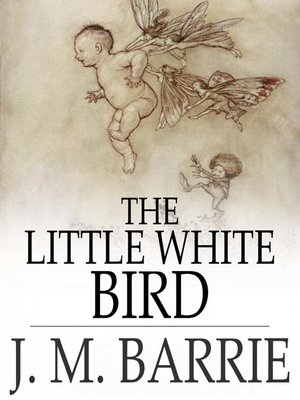 |
| Image Courtesy of NASA. |
Since this will be my final time ringing the bell before the calendar turns to 2023(!?!?), of course the temptation is to drop in one of those terrific end-of-the-year lists and call it good. I'm not gonna do that.
I will, however, link to a couple of really good lists of this variety written up and curated by folks whose tastes I quite like and respect. For a terrific list of historical crime fiction from this year, take a look at what Crime Reads has to say here. Goodreads also weighs in more generally with a solid list of the most popular mystery and thriller books of the year right here.
And then there's historical nonfiction. The Wolfson Prize committee has done solid work year in and year out singling out great writing founded upon solid scholarship over the past several years. You can find their short list featured here. I have only read one of the books on this list (The Ottomans: Khans, Caesars, and Caliphs by University of Chicago professor Mark David Baer–and not surprisingly based on Baer's previous corpus of work, it is superb), but the rest of the list takes pride of place on Thornton's Mt. TBR (Seriously, it's too tall, broad and imposing to settle for merely going by the diminutive of "List.").
Alright now that the requisite list-dropping is out of the way, let's move on to the main thrust of this post. It's about EMPATHY. Something I am finding in distressingly short supply these days. Social media seems designed to divide us (looking at you, Twitter.). And the news media seems dead set on framing every news story within its potential for some form of conflict.
Remember the old adage, "If it bleeds, it leads"? Sure seems true these days. And that's a real shame for a lot of reasons. I follow the reporting of many first-rate journalists, independent, establishment, foreign and domestic, and I don't see them doing the framing. It seems to emanate from a variety of media corporations counting on conflict reportage for more "record profits."
I'm no fan of our most recent former president, and agree with the assessment of a long-time friend of his, who has famously described POTUS 45 as someone who would "lie just to keep in practice." However, one way in which he seems to have been both truthful and spot-on is when he talked about how the media loved him because he was ratings gold and made them truckloads of money.
I'll try not to bludgeon my readers here at this blog over the head with my general point. Rather I'll point out that I have extended family and lots and lots of friends who agree politically with "the other side." Want to know how many friendships I have lost because of these differences? Or how many family members I no longer speak with because of them? Both answers are the same: ZERO.
I like to think that it's mostly because when we take the time to talk, we have so many other, more important things to talk about (especially bragging about kids or about sports teams. Mariners BROKE THE CURSE! WORLD SERIES IN 2023!!!!). And it's also because as hard I work to see the good in my family and friends, I firmly believe they're doing the same with me. God love them. ALL OF THEM.
.jpeg) |
| Don't forget: THIS happened!!!!!!!!!!!!!!! |
And when it comes to my family, I'm positive the majority of my relatives are as ready as I to turn the page on 2022. We lost not one, but two of my aunts, and one of my cousins this year. One of my aunts was in her eighties, the other in her sixties, and my cousin was in her thirties. Man, it's true what they say: take your loved ones and hold them close and never let them forget how much you cherish them.
And you need not be related by blood to consider someone a "loved one" (duh, I hear you say). One of my parents' best friends passed away suddenly (at least it seemed so to us) after a brief battle with cancer. We were gutted, my parents, my brother, my wife and son, too. His spouse is now out there navigating a world without him, and our hearts go out to them as well.
Today I stopped in at the corner espresso stand where my wife loves to get her coffee. When I was there the other day their espresso machine had just broken down (so she got drip coffee that day-no complaints from her, either way). I checked in with them on whether the espresso machine was still down.
Turns out it was, but they had an espresso machine wizard there fixing it.
While that was good news I worried how this would affect these baristas during this, the week before Christmas. I don't drink cofee, so I ordered a huge iced tea (in 26 degree weather- that Thornton, he's a bright one, for sure!) and tipped the heck out of them. Hey. Every nickel helps. And tips are not optional.
I just so happened by this particular coffee stand on my way home from an appointment with my new doctor. My family recently changed insurance, and after years with a particular HMO, I started over today.
And man, was it an eye-opener. I felt seen. I felt heard. I felt like the opposite of the "just one more number" I had not even realized I'd felt like for so very long with my other provider.
And it wasn't just my doctor. All of the staff there were patient, informative, helpful, and (here's that word again) EMPATHETIC.
Not even going to pretend it didn't choke me up a bit.
Actually, being more empathetic, really listening to and hearing others has been my secret resolution for all of 2022. I've still got work to do. And I fall down more than I stay on my feet with it. But the benefits I receive in return for trying to do just this little bit for others? They are boundless.
So in this season where it is customary to wish for "Peace on Earth, Good Will to Humankind," let me take a moment and extend that wish to you, our readers.
Whatever your spiritual practices, your political beliefs, or your favorite sports teams (yes, even to you Yankees fans out there!), from my family to yours: may you find joy and comfort and love and fellowship and rest and ease, and surprises and excitement in whichever mix best suits you.
See you in the new year!
.jpeg) |
| Once more for good measure! Go Ms in 2023! World Series-bound! |











































